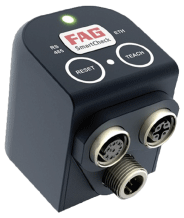For industrial products with longer life cycles and product families with different hardware and software variants we generally recommend a mainline-based development approach. This also applies to projects with normative requirements on processes, tooling and reproducibility.
Investment security through mainline-source-based systems
In a mainline-based development approach we obtain the components that are really necessary for the Linux system directly and comprehensibly from the respective community. These are put together and documented in an open-source-based build system utilizing secure processes.
A board support package developed according to these design principles is transparent and easy to develop further, to maintain, to test and to qualify. This applies not only to individual products but especially to complete product families.
Undesirable and unclear interactions between components are kept to an absolute minimum; the resources required are correspondingly low. Requirements of norms in relation to source, suitability, documentation and traceability can easily be realized.
Our mainline support includes:
- Derivation of the mainline components from the system architecture
- Selection of the most suitable upstream/mainline kernel
- Identification, evaluation and selection of mainline components
- Deposition of the mainline components in repositories
- Qualification of components and open source compliance
- Utilization of relevant patches from the SoC and SoM manufacturers
- Utilization of relevant security patches from the upstream communities
- Selection of the most suitable build system for development and maintenance
- Compilation, test and documentation of the BSPs including licence information
- Identification, qualification and utilization of updates
- Development and integration of bug fixes and improvements
- Cooperation with the upstream communities
Within the framework of maintenance, this enables us to integrate relevant improvements from the community with a minimum of effort and in a targeted and traceable way. This includes, for example, packet updates and security patches for product-specific evaluated security risks.
BEST PRACTICE
Schaeffler Gruppe
Developing and maintaining process-secure product variants
The central aim of the project was to be able to maintain and update the Schaeffler embedded Linux platform through an improved build system and software management.
A further aim was to make it economically possible to develop and maintain variants of the product on the basis of a unified software version.